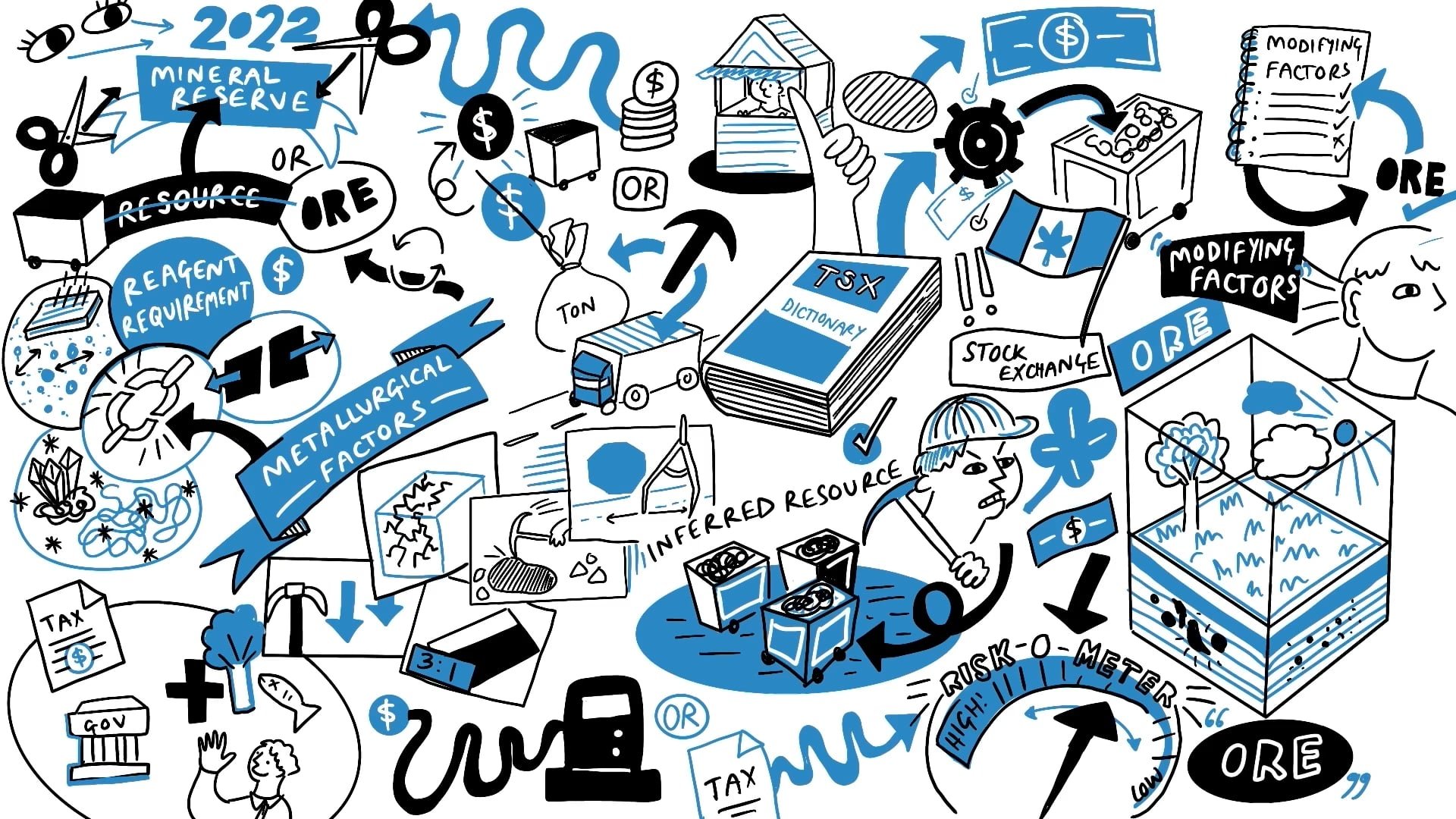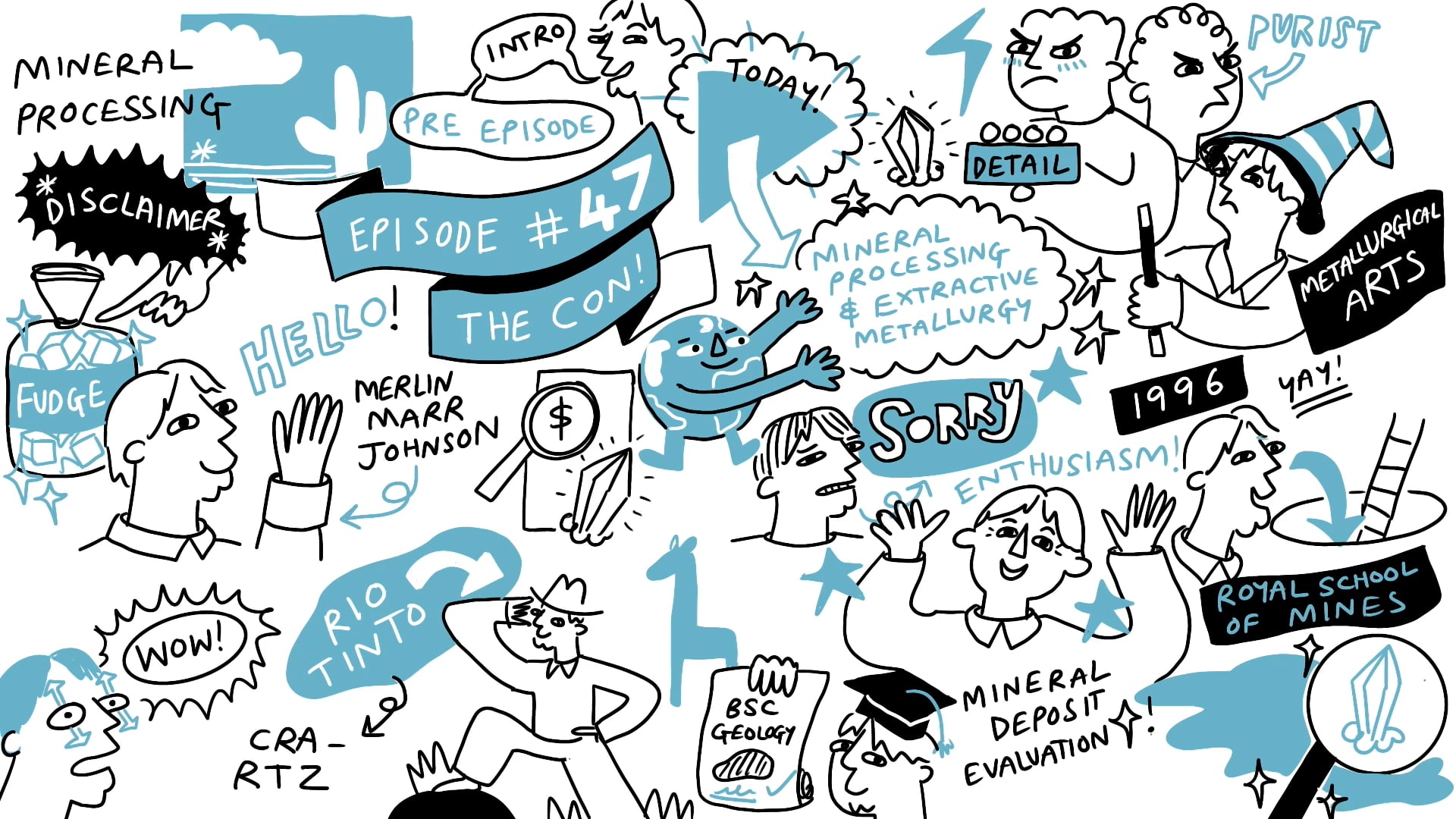Strategy: Dividend Yield

More episodes
Transcript
For this section, we will focus on the different strategies that resources companies take. By understanding the strategy that the company is taking, you can better understand your current or potential investments.
As a general rule, investors typically come to a company first because they're invested in a certain thematic. For example, if I'm worried about the global debt burden, I might be interested in a gold company. If I'm looking for a way to play the future, the market and the electrification of society, I might choose a copper company. If I'm particularly interested in looking at battery materials. I'll look at nickel, lithium, or cobalt. Once you've selected your thematic, you then need to choose what kind of company and what kind of investment to go for.
Stepping away from resources for a second. In the broadest sense of investment, there are two ways that your investment will go up, either through dividend yield or through capital value growth. In this episode, I'm going to focus on dividend yield within the resources sector. Okay. So if you buy your shares in the resources sector for dividend yield, you're essentially taking the view that the share price may not change very much. It will vary with the cycle. But essentially you're looking to get your returns from your company through the dividend flow immediately. You've got that gating moment. Is this company really going to provide dividend yield or is it going to offer capital growth? Remember that growth is typically associated with the resources sector because the resources sector is capital intensive.
Therefore, if your company is going to get bigger and better, it needs lots of capital, lots of money, and the lowest cost of capital typically for a mining company is money that it produces itself, which is free cash flow. So if you're in growth mode and you've got production, any of the money that you generate or a lot of the money that you generate is going to go back into the growth side of the business, therefore is unavailable for dividend payout to shareholders. So that means that most resource companies that have got this kind of growth profile are going to be allocating their capital to growth, not to dividends. So you can only really get dividends within the resources company in certain specific situations. One type of company that can pay a dividend are the majors. These are huge companies which with many divisions. I mean, look at the Rio Tinto's or the BHP's of this world. They've got iron ore divisions, coal divisions, base metals, precious metals. BHP has even got an oil and gas sector. Therefore, due to their sheer size, they can maintain a dividend and chase growth as well. The power of their balance sheet enables it. They've got the balance sheet to enable both growth and pay a dividend. So that's one area where you can get the get a dividend from resources company, and they can maintain their growth profiles to a degree, even though of course, trying to get a major like BHP to grow rapidly is much harder than to get a smaller company off a lower base to increase rapidly in size. So the reason why most retail investors are not so interested in these huge corporations is that they lack an individual narrative and the leverage to a single commodity. Huge corporations have multi billions of dollars of market capitalization, and your investment in them is largely a cyclical choice. You say, I'm going to put some money into the majors and park it there, and it doesn't give you the granularity to be able to say that this investment has got the potential to be a double or a multi-bagger because of a specific discovery, or because of the fundamentals of a specific commodity. However, the majors are very much a part of the retail
investors suite of choices. And if you believe in the resources sector, if you believe in the resources cycle as well, you should have some investments in the majors because they've got good capital discipline (or they should do), and great power. So that's one kind of company that can pay a dividend in the resources sector.
Another kind of company that can pay dividends in the resources sector is a company that's essentially in harvest mode, for whatever reason. They have an asset that's difficult to grow and a position that it makes it difficult to replicate or to find other companies in which to invest. A company such as sentiment, a gold producer with 50% of the Sukhari project in Egypt, is one such company. Another one that springs to mind is Central Asia Metals, which is also London listed. It's a copper producing company and zinc as well, but they're essentially working the dumps in Kazakhstan. And both of these companies have got a fabulous deposit. And they're in the harvest mode because effectively they're exploiting a depleting asset and they can't find new places to invest their money in new growth, which gives them the same kind of return that their current asset does. Any new deal they actually do degrades the quality of their own portfolio. And in those situations, they set up as a dividend payer and run down their asset. Central Asian metals, of course, does look at other things, and they will come to a point where they will pick up other assets. But it's very hard to find a hard rock new build project that can compare or compete with the capital efficiencies and the cost efficiency of the Konrad leach project in Kazakhstan. The company talks publicly about capital discipline, which is another way of saying that they struggled to find an asset as good as Conrad. Yes, it has bought the mine in North Macedonia, but effectively CAML pays a regular dividend on a depleting asset.
In the case of Centamin in the mid 1990s, sentiment was such that the share price was down at 1 or 2 pence and it was an exploration story. And if you remember, the Egyptian government actually took away title for about five years. And the El Ragi family, one of the major shareholders and founders of the company, had to work extremely hard to keep the company together and keep pressing for that title, which they eventually got back. Sentiment returned to the sector and the share price went from one pence to a pound and then towards £2. It therefore had all of that exploration, growth, capital gain from growth that we so love about the resources sector. But once it was up and running, the El Ragi family still had 5% of the shareholding. The reason for owning the shares changed because the company had changed as a company, and El Ragi family realized that building a new project in Egypt would be hard, and finding another project to provide the same kind of returns as Sukari would be very hard. And so actually, for the shareholders, the best thing that they could do was to pay out a dividend. And in recent years, once the share price reached £2 and then pulled back, but once it kind of settled into kind of a range trading price horizon, the most important aspect of owning sentiment in recent years has been the dividend, not the capital value growth of the share price itself.
The final group of companies that pays dividends, sometimes in spectacular fashion, are single commodity companies that have got a strong production base in a commodity that falls out of favor with the broader markets. The classic example in recent years has been the coal sector. No one wants to own coal mining companies because of the stigma. It's out of choice of not wanting to be that contributor to climate change. But the coal companies are actually paying out dividends as they're still highly profitable companies.
In the next episode, I will talk about capital value growth.









































.jpg)
.jpg)
.jpg)
.jpg)















